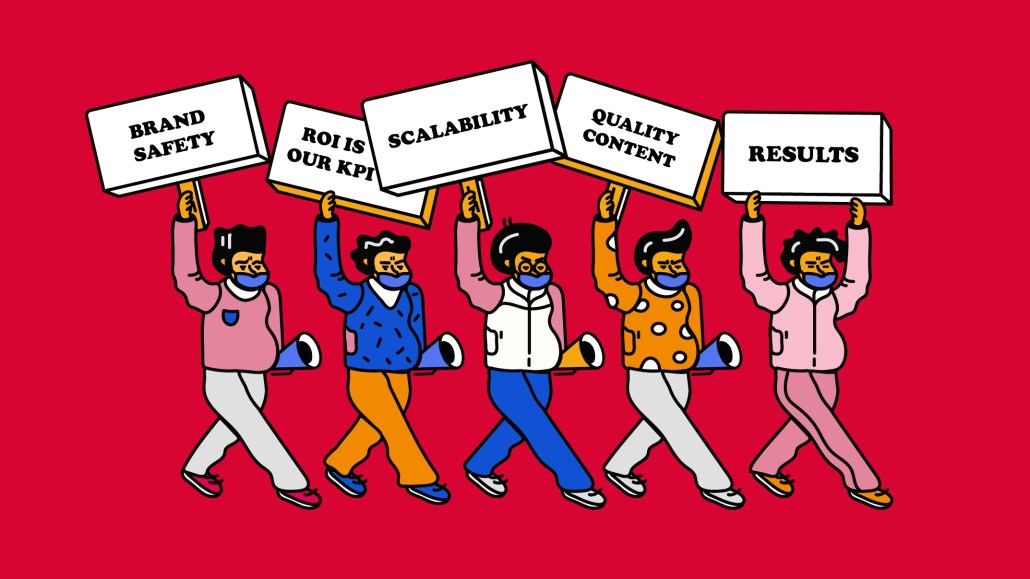Why brand safety and suitability are no longer at odds with news monetization

Tina Iannacchino, senior director, publisher partnerships U.S., Seedtag
News publishers have long based their business models on a core value proposition: audiences came for the hard news, and advertisers came for the audiences. But with advertisers increasingly concerned about brand safety, it has become increasingly challenging for news publishers to cover tough issues and also run a robust advertising business.
To maintain a pristine brand image, many advertisers have historically relied on basic keyword-driven checks to ensure their ads don’t appear alongside content deemed unsafe or inappropriate. While the idea is to protect the brand’s image, the repercussions for news media have been profound. The rote application of these checks has unintentionally starved news outlets of critical ad revenue, thereby challenging the economic viability of valuable journalism in the digital age.
The AI revolution has brought innovations to contextual targeting and intelligence that will help to resolve this problem. Better contextual tech, with the power to go beyond sites and keywords to understand the nuanced meaning of content, can give news organizations a fairer representation to advertisers. It can prevent brand safety from unnecessarily blocking revenue, and AI-powered contextual can also help grow revenue advertisers better target the true meaning behind the content.
The brand safety dilemma demands more nuance in news publishing
The keyword block lists on which advertisers rely often paint with too broad a brush, hurting both brands and publishers.
“The continued use of blocklists carries serious, negative ramifications for hard-hitting news organizations — especially those dealing with social and political issues affecting the underrepresented communities most advertisers claim to help,” said Al Jazeera’s Michael Weaver in a recent Digiday article.
This highlights the urgent necessity to not just focus on brand safety but to actively pursue brand suitability — a concept that urges brands to seek out the most appropriate content and contexts for their advertisements, essentially advocating for a deeper connection between the content and the brand message.
Transitioning from safety to suitability demands an evolved contextual awareness. The innovative use of AI, machine learning and large language models promises to cater to this need, fostering a semantic understanding of entire paragraphs and visual content.
Contextual technology is revitalizing news monetization
The era of rigid keyword-based safety protocols — which flagged content for individual terms, oblivious to the overarching narrative — is giving way to an AI-enabled contextual technology. This technology grants a nuanced perspective of a page’s content’s full sentiment and meaning, paving the way for a harmonious coexistence between brand suitability and news monetization.
Achieving this more refined understanding of context is made possible by leveraging partners and tools that can access vast arrays of content across multiple publishers. Defining contextual parameters based only on a single publisher’s content is restrictive, but contextual technologies trained on a much more extensive array of sites can more accurately discern the real meaning of content — appreciating the broader picture rather than isolated words or phrases. This advancement also promises a deeper, more comprehensive understanding of the correlation between content and consumer behaviors.
Armed with such insight, publishers make more informed editorial decisions that preserve journalistic integrity while also optimizing for return on investment. This refined perception of content, where the actual narrative spirit is appreciated, fosters a climate where brand messages can thrive harmoniously with compelling, authentic journalistic content without penalizing it for handling sensitive topics.
Through partnerships, publishers are establishing sustainable news monetization models
News organizations are harnessing significant benefits from this technological shift. It promises a decrease in inflexible content blocklisting and the fostering of healthier, more transparent relationships between advertisers and publishers. This collaboration is built on a solid foundation of understanding and strategized content direction, where detailed analyses inform fruitful partnerships and shared growth.
This dynamic technology offers publishers an enhanced understanding of their content, encouraging strategic narrative development while presenting advertisers with insightful content analyses. It foresees a partnership where collaboration and trust take center stage, nurturing a mutually beneficial ecosystem.
The digital advertising industry is on the brink of a transformative era in which brand safety and news monetization nurture a resilient media environment. Publishers must take the helm, partnering with contextual technology and intelligence firms to usher in an era of informed, beneficial brand safety strategies.
Sponsored by Seedtag
More from Digiday

Pandora is betting on AI agents to scale service and emotional selling during the peak holiday season
Pandora is using AI agents to scale customer service and replicate emotional in-store selling online, just as peak season puts pressure on margins and teams.

Rembrand’s CEO wants to grow virtual ad placements in streaming, and he’s looking elsewhere for models
Omar Tawakol wants to improve advertising within the streaming world, and is working with advertisers and publishers to improve that experience.

Marketers are keen to use generative AI in ad campaigns, but hidden costs lurk
Marketers across the industry want to use AI to cut down on time spent in creative production. It’s not so simple in practice.








